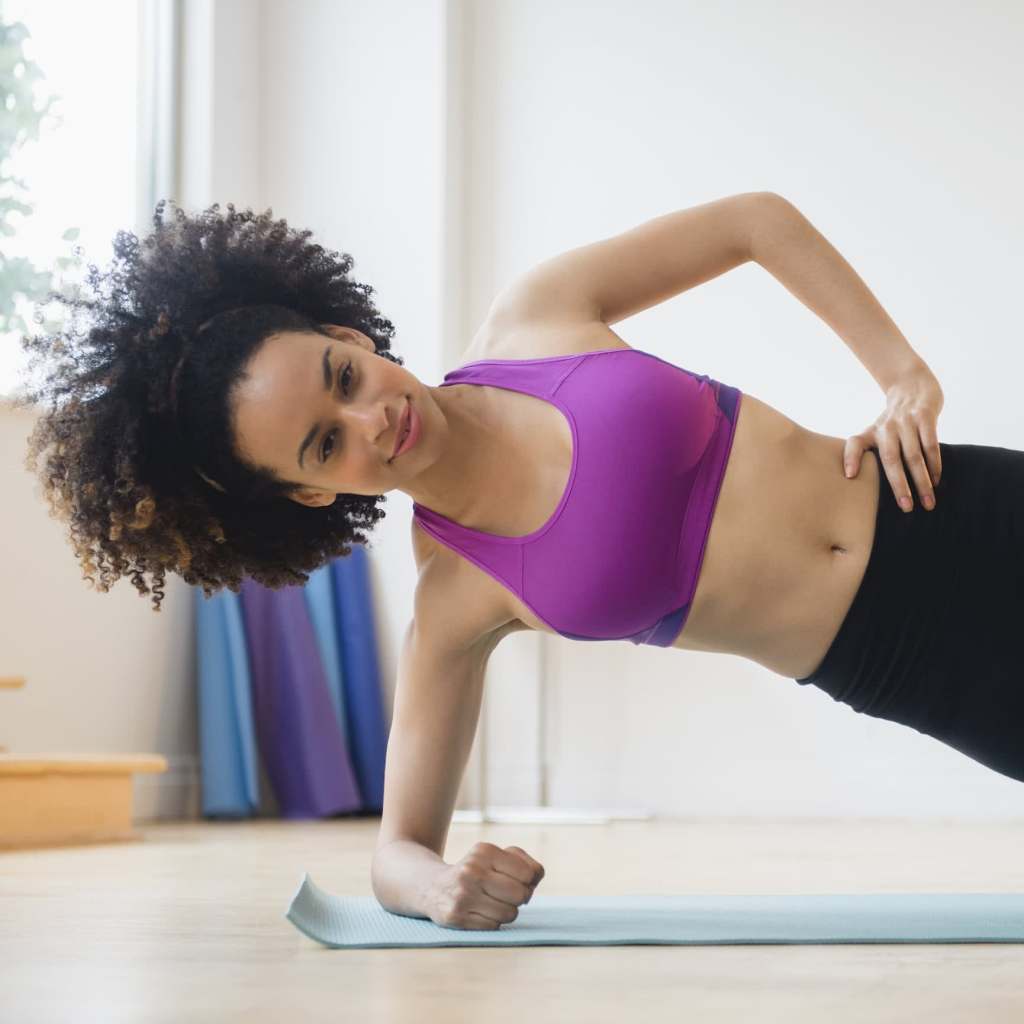Just because a move is simple in nature, doesn’t mean there isn’t room for error. Take the side plank, for example. It’s one of the most classic and effective core-strengthening moves – when done correctly.
However, when your form is lacking, you’ll not only miss out on physical results, but you could also experience physical pain in different parts of the body, like your shoulders.
To get more details on proper side plank form and to prevent shoulder and even elbow pain while doing the move, we reached out to Chyna Bardarson, a NASM-certified personal trainer and Tone It Up App trainer.
Bardarson confirms that the side plank is an amazing tool for targeting your oblique muscles, but in order to get the most out of the move and to reduce pain or stress felt in your shoulders, proper core engagement is essential. “The correct side plank form is to lay with your forearm flat on the floor and the elbow lined up directly under your shoulder. Keep legs extended out with feet either staggered or stacked on top of each other. As you engage your core, it is important to keep a straight line from your head to your feet, rather than allow your hips to sag,” Bardarson says.
If you prefer to balance on your hand, Bardarson suggests placing your wrist under the shoulder and pressing down into the full width of your hand. Lifting out of the shoulder joint in this way, she says, could help prevent shoulder pain. “Also, this is where it is important to remember the power of engaging your core. The more emphasis you place on healthy engagement of your core, the less stress you will feel on your shoulders.”
So, it’s really all about utilizing the muscles that the side plank is meant to work.
If you typically balance on your forearm during a side plank, another way to prevent aches and irritation is to exercise on a supportive comfortable surface, Bardarson says. “A supportive yoga mat, a pillow, or a towel to place under your forearm may help.”
Remember, modifications are also always at your disposal if side planks still bother your shoulders and arms. “A great modification would be to drop the knee closest to the ground. This way, you can get much more support from your lower body and take pressure off your upper body. However, it still effectively hits the obliques.”
Click here for more health and wellness stories, tips, and news.
Related: If You Want to Slim Your Waist, These Are the 13 Best Side Plank Variations

